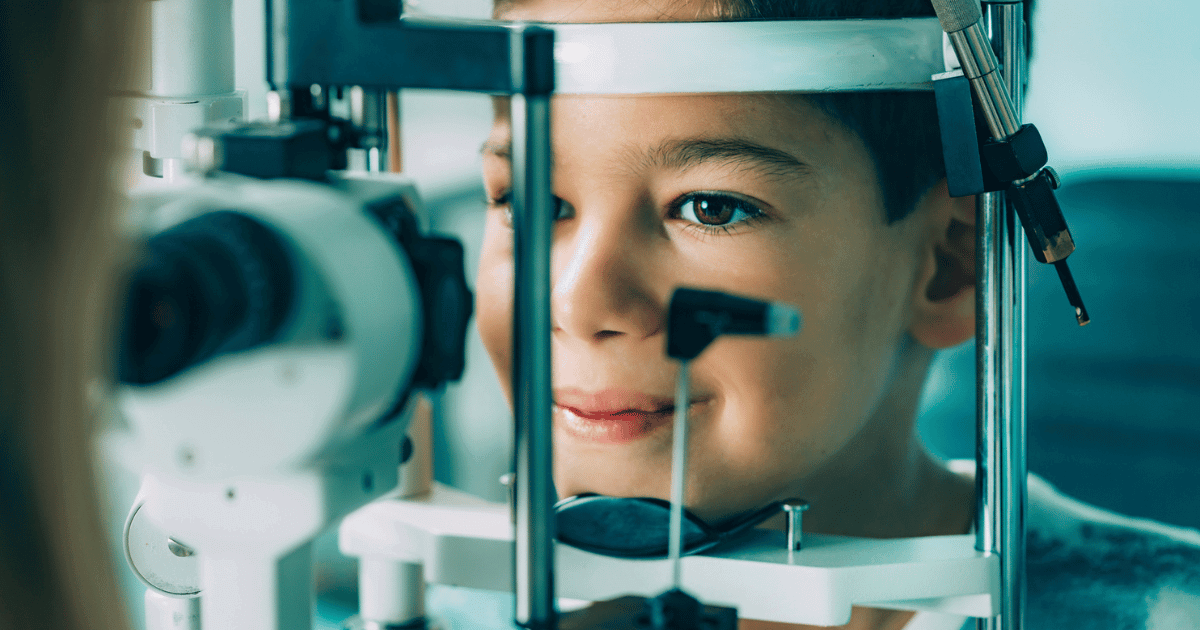How Your Vision Changes as You Age
April 22, 2025
Aging is a natural part of life, and like the rest of your body, your eyes change as you age. These changes affect how you see and how your eyes feel daily. While some shifts are normal, others signal conditions that need professional care.
4 Common Age-Related Vision Conditions
 Certain vision conditions become more common as we age. Knowing what to watch for and understanding your options can make a big difference. Here are some of the most common age-related vision conditions.
Certain vision conditions become more common as we age. Knowing what to watch for and understanding your options can make a big difference. Here are some of the most common age-related vision conditions.
Presbyopia
Presbyopia is a natural part of aging that affects almost everyone over 40. It occurs when the lens of your eye becomes less flexible, making it harder to focus on objects up close.
Symptoms to Watch For
- Difficulty reading small print, such as on menus or phone screens.
- Needing to hold reading materials farther away to see clearly.
- Eye strain or headaches after doing close-up work, like reading or sewing.
Treatment Options
Presbyopia is often managed with reading glasses, bifocals, or progressive lenses. If you notice these symptoms, a comprehensive eye exam will help determine the best solution for your needs.
For more information, read Treatment Options for Presbyopia.
Cataracts
Cataracts develop when the natural lens of the eye becomes cloudy, leading to blurry or dimmed vision. It often progresses gradually and is a leading cause of vision impairment in older adults.
Symptoms to Watch For
- Vision may appear foggy or blurred, as if you are looking through a frosted window.
- Colors may seem dull or less vibrant.
- Increased sensitivity to light and glare, especially when driving at night.
Treatment Options
In the early stages, stronger lighting and updated prescriptions help. However, as cataracts progress, surgery is often the best option. Cataract surgery is a highly effective procedure that replaces the cloudy lens with a clear artificial one to restore vision.
Age-Related Macular Degeneration (AMD)
AMD affects the macula, the part of the retina responsible for sharp central vision. It is a leading cause of vision loss in older adults and makes activities like reading or recognizing faces difficult.
Symptoms to Watch For
- Blurred or distorted central vision (e.g., straight lines appearing wavy).
- Difficulty seeing fine details, even with glasses.
- A growing dark spot in the center of your vision.
Treatment Options
While there is no cure for AMD, early detection is key. Lifestyle changes (such as stopping smoking) can help slow its progression. For advanced cases, treatment options like injections or laser therapy may be recommended.
Check out How to Prevent AMD with Smart Lifestyle Choices to learn more.
Glaucoma
Glaucoma is a group of eye conditions that damage the optic nerve, often due to increased pressure in the eye. It develops slowly and will lead to blindness if not treated.
Symptoms to Watch For
- Peripheral vision is typically affected first, creating blind spots on the edges of your sight.
- As glaucoma progresses, you may notice your field of vision narrowing, leading to a "tunnel vision" effect.
Treatment Options
Glaucoma is often called the “silent thief of sight” because it develops gradually without noticeable symptoms in the early and moderate stages. Regular eye exams are critical for catching it early since treatments like eye drops, medications, or surgery can help protect your vision.
Tips for Preserving Vision as You Age
 Maintaining a healthy vision starts with proactive care and lifestyle choices. Incorporating these habits into your daily routine will protect your eyes and reduce the risk of age-related vision problems.
Maintaining a healthy vision starts with proactive care and lifestyle choices. Incorporating these habits into your daily routine will protect your eyes and reduce the risk of age-related vision problems.
Healthy Lifestyle Habits
- Eat a balanced diet: Foods rich in antioxidants, like leafy greens, citrus fruits, and colorful vegetables, support eye health. Omega-3 fatty acids (found in fish like salmon and tuna) also help reduce the risk of dry eyes and other conditions.
- Stay physically active: Regular exercise supports overall health, including the blood vessels that nourish your eyes. Activities like walking, yoga, or swimming lower your risk of diabetes and high blood pressure, both of which impact vision.
Regular Eye Exams
Eye exams uncover issues before they affect your vision, allowing for timely treatment and better outcomes. Conditions like glaucoma often develop silently, making regular checkups your best defense.
If you are under 60, an eye exam every two years is recommended.
After 60, annual exams become essential to monitor for age-related vision conditions.
Protective Measures
- Wear sunglasses: UV rays can damage your eyes, contributing to cataracts and AMD. Choose sunglasses that block 100% UVA and UVB rays to protect your eyes outdoors.
- Use proper lighting: Reading or working in dim lighting strains your eyes. Check that your workspace is well-lit to reduce fatigue and discomfort.
- The 20-20-20 rule for eye strain: If you spend a lot of time on screens, you might notice your eyes feeling tired or strained. The 20-20-20 rule can help: Every 20 minutes, take a break and look at something 20 feet away for 20 seconds. This simple habit allows your eyes to relax, reducing strain and improving focus.
The Role of Smoking in Vision Loss
Smoking has a significant impact on eye health by increasing the risk of conditions like AMD and cataracts. The toxins in cigarette smoke damage the blood vessels in your eyes, accelerating these issues.
When you quit smoking, you reduce your risk of vision loss and improve your overall health. It is never too late to benefit from stopping. Your eyes will thank you.
When to Be Concerned: Sudden Vision Changes
While gradual vision changes are a natural part of aging, sudden vision changes indicate a more serious underlying issue. It is important to recognize these warning signs and seek immediate professional help.
Warning Signs to Watch For
- Blurred or distorted vision: This could signal a problem like a stroke, optic neuritis, or AMD. These conditions often require urgent care to prevent long-term damage.
- Flashes of light or floaters: Occasional floaters (tiny shadows or spots in your vision) are common. However, if they appear suddenly or are accompanied by flashes of light, it could mean a retinal tear or detachment. Retinal detachment is a medical emergency that requires prompt treatment to avoid permanent vision loss.
- Sudden vision loss: Losing vision in one or both eyes without warning is a serious concern. It may indicate conditions like a stroke, vascular occlusion, or closed-angle glaucoma. Immediate evaluation by an eye care professional is critical in these cases.
What to Do If You Notice These Symptoms
Sudden vision changes are never something to ignore. Even if the symptoms seem mild or improve on their own, they could signal a serious issue requiring urgent attention.
If you notice any of these signs, contact your eye doctor immediately or visit an emergency care center. Early intervention is often the key to preserving your sight and preventing further complications.
Your vision is precious, and addressing potential problems promptly will help protect it.
The Role of Professional Eye Care

Professional eye care plays a crucial role in preserving vision as you age. Personalized attention from an experienced eye care team can address age-related vision challenges and provide solutions tailored to your needs.
Heart of Texas Eye Care: Expertise You Can Trust
At Heart of Texas Eye Care, we specialize in diagnosing and treating a wide range of eye conditions. Our services include:
- Diagnosis and treatment of common conditions: From presbyopia to cataracts and AMD, we offer comprehensive care to help you maintain clear vision and protect your eye health.
- Advanced technology: We use cutting-edge tools to provide accurate diagnoses and treatments. Whether you need cataract surgery, AMD management, or customized solutions for vision correction, our team is equipped to provide the best care possible.
- Patient-first approach: Our focus is always on you. We take the time to understand your concerns, answer your questions, and guide you through every step of your care journey.
Professional eye care is more than addressing problems – it is about supporting your vision and quality of life as you age.
At Heart of Texas Eye Care, we are here to help you see your best for years to come! Schedule an appointment today or call us at (512) 213-2220.
We serve patients in Dripping Springs, Austin, Kyle, Bee Cave, Marble Falls, and surrounding areas.


